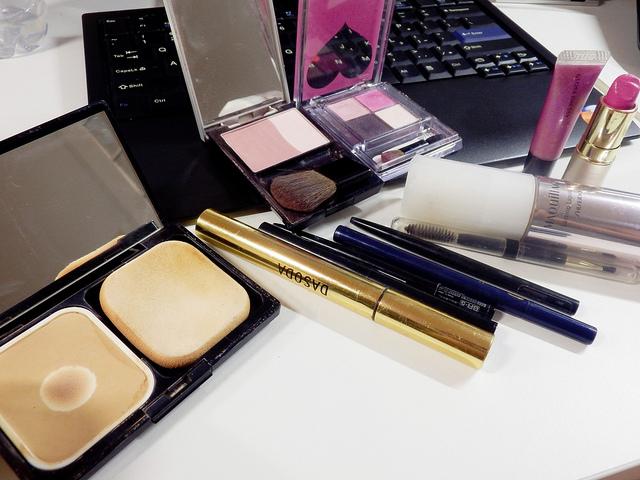Last weekend, Dove was thrown into a turmoil of controversy after the release of a “racially insensitive ad” sparked public outrage. The advert, which showed a black woman removing her top to reveal a white woman underneath and successively a Middle Eastern woman, was immediately taken down in response to the heated dispute. Unfortunately, the damage was already done.
To be fair, there are 3 women in the ad: BLACK woman switches to WHITE then to BROWN. Should they reverse the order?
pic.twitter.com/imxCeVPHmR
— Hasdi Bravo
(@HasdiBravo) October 8, 2017
The clip – which was posted on Facebook – was only a three second excerpt from the entire 30 second ad, and was branded as racist for the suggestive transition from black to white, conveying that Dove’s body lotion “cleansed” the black model’s complexion. The implicit micro-aggression was further amplified when images of the clip rapidly circulated social media.
So uh… #Dove – what’s happening here? pic.twitter.com/v0PzdtWTBc
— Chasity
(@chasityscooper) October 7, 2017
People began to threaten boycotting Dove products as the hashtag #BoycottDove disseminated through Twitter, jeopardizing the company’s brand image.
To make matters worse for Dove, this isn’t the first time they have been accused of racism. Back in 2011, the company released an advertisement for Dove VisibleCare, a product that “improves” and gives you “visibly more beautiful” skin. The advert shows three women standing in order of gradation by skin color (black to white), aligned with a before and after image in the background, suggesting that black skin represents the “before” and white skin represents the “after”.
The hinted, supremacist elevation of white skin as a standard for beauty is beyond irrational and prejudiced thought.
While the first incident may be accepted as a mistake, claiming another successive ad as such reveals plain laziness, ignorance and insensitivity. This makes us question the incentives of the company.
After the controversy, Dove said in a tweet: “An image we recently posted on Facebook missed the mark in representing women of color thoughtfully. We deeply regret the offense it caused.”
An image we recently posted on Facebook missed the mark in representing women of color thoughtfully. We deeply regret the offense it caused.
— Dove (@Dove) October 7, 2017
This incredibly vague and unapologetic response only doubled the public outrage.
Dove, quickly catching on, tweeted again in an attempt to clear the hazy, dark and contentious cloud casted over their public image.
— Dove (@Dove) October 9, 2017
“The short video was intended to convey that Dove body wash is for every woman and be a celebration of diversity, but we got it wrong. It did not represent the diversity of real beauty which is something Dove is passionate about and is core to our beliefs, and it should not have happened.”
In a time where political correctness dominates our social sensitivity, and markets profit from diversity, it is especially critical for businesses to carefully evaluate and reevaluate their content before releasing it. In response to Dove’s statements, public critique began to center around Dove’s need to make changes to their internal organizational structure.
However, what is less discussed in the media is that for nearly a decade, Dove has been running a successful marketing campaign called Real Beauty, which advocates diversity, self-acceptance and self-love. The company has clearly and effectively vocalized their mission “to expand the definition of beauty by putting the power of storytelling into real women’s hands,” countering the narrow, pretentious standards of beauty often displayed through mass media.
The campaign is clearly not just a marketing strategy, but an effort to alleviate the challenges many women face regarding confidence and discouraging societal standards of beauty. So considering Dove’s recent successes and positive brand image, why did the current campaign fail? Is it accurate to blame the creators of the ad as ignorant and racially insensitive?
While several elements may have lead to the public outrage, major fuel to the blowout last weekend was mass media.
Mass media undoubtedly holds a powerful grip on our current society, and it is easy for information to circulate regardless of accuracy. Last weekend, after the advert was taken down, the photo showing only four frames of the entire ad dispersed the internet.
This image failed to represent the campaign as a whole. It stripped the frames away from their original context and created a new one, narrowing in and amplifying what would hardly be perceived as micro-aggression, into a full-on racist image. That’s the scary thing about media. Whether the creator of this post had intentionally or unintentionally excluded the rest of the advert, we can agree that media is a powerful tool of manipulation.
Companies such as Dove have to be particularly careful when executing media with potentially sensitive content, because the public can easily manipulate images and drive outrages beyond market control.
Ayaka Thorson (aathorson@wisc.edu) is a freshman who is currently undecided.


